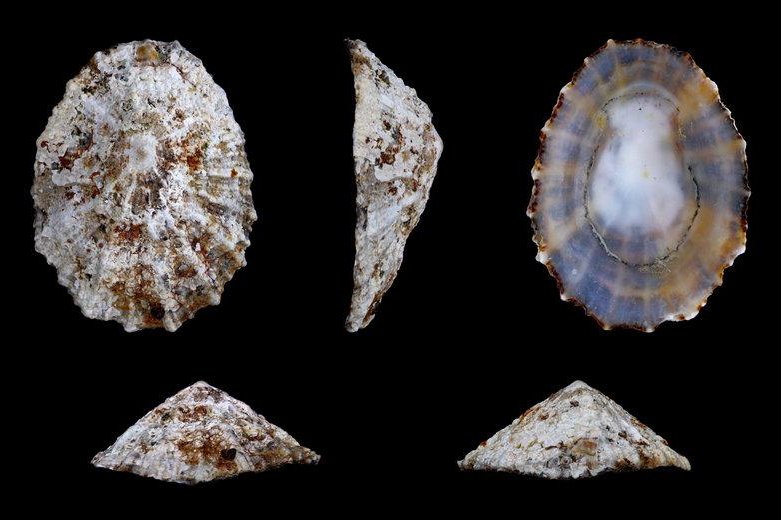Laser imaging of modern limpet shells allowed scientists to hone in on the relationship between climate conditions, specifically marine temperatures, and the mineral composition of growth rings. Photo by H. Zell/Wikimedia Commons
March 7 (UPI) -- Scientists are poised to dramatically expand the record of ancient climatic conditions thanks to a new laser imaging technique used to analyze mollusk shells.
The remains of shells have long been used by archaeologists to gain insights into distribution and movement patterns of ancient coastal communities. Ancient shells give researchers insights into the use of natural resources by early human populations and offer evidence of technological advances.
Scientists can also glean insights into what the climate was like at the time of their deposition.
"If we know what sorts of climate fluctuations the mollusks were living through, we also get an idea of what the humans were experiencing, and we can then look at other archaeological evidence to see how the humans -- and other flora and fauna -- were responding to these changes," lead study author Niklas Hausmann said in a news release.
Traditional methods used to geochemically analyze shells are time-consuming and expensive, limiting the scale at which they can be used to reconstruct ancient climate records.
Researchers at the Max Planck Institute for the Science of Human History have found a way to more efficiently analyze shells using laser imaging technology.
For their study, scientists first used the new method to analyze modern shells, for which there is plentiful and detailed climatic data. Researchers used LIBS, or laser-induced breakdown spectroscopy, to analyze shells collected from nine different sites across the Mediterranean.
Modern climate records allowed scientists to calibrate their technique to ensure the analytical method can reproduce precise climate details.
The new, more comprehensive imaging technique allowed scientists to confirm the precise correlation between marine temperatures and the mineral composition of mollusk shell growth rings.
"Shells are an interesting archive to look at in comparison to, for instance, sediment or ice-cores, because shells are so closely intertwined with past human lives," Hausmann said.
The inefficiency of earlier analysis techniques meant scientists were never able to analyze more than a dozen or so shells, limiting the scope and accuracy of the climate record scientists could build. The new technique -- detailed in the journal Scientific Reports -- will allow researchers to analyze hundreds of shells from dozens of sites.
"To be able to compare hundreds or a thousand shells is a game changer for climate modeling," Hausmann said.















